First Off, What Does Foam Rolling Do?
Exercising is important, but recovery is just as essential. How you recover defines your next training session and overall progress and health. There are many methods of recovery, but one of the best ways is to foam roll — so how does it work?
During a workout, your muscles tighten up, and foam rolling helps release that tension in your fascia, the layer between your skin and muscle. It hurts, but the benefits are plentiful.
Foam rolling can relieve muscle tightness, soreness and inflammation, and help increase your joint range of motion. It can also reduce your risk of injury, improve your posture and increase flexibility.
Combined with deep stretches, this recovery routine will be your best friend post-leg day.
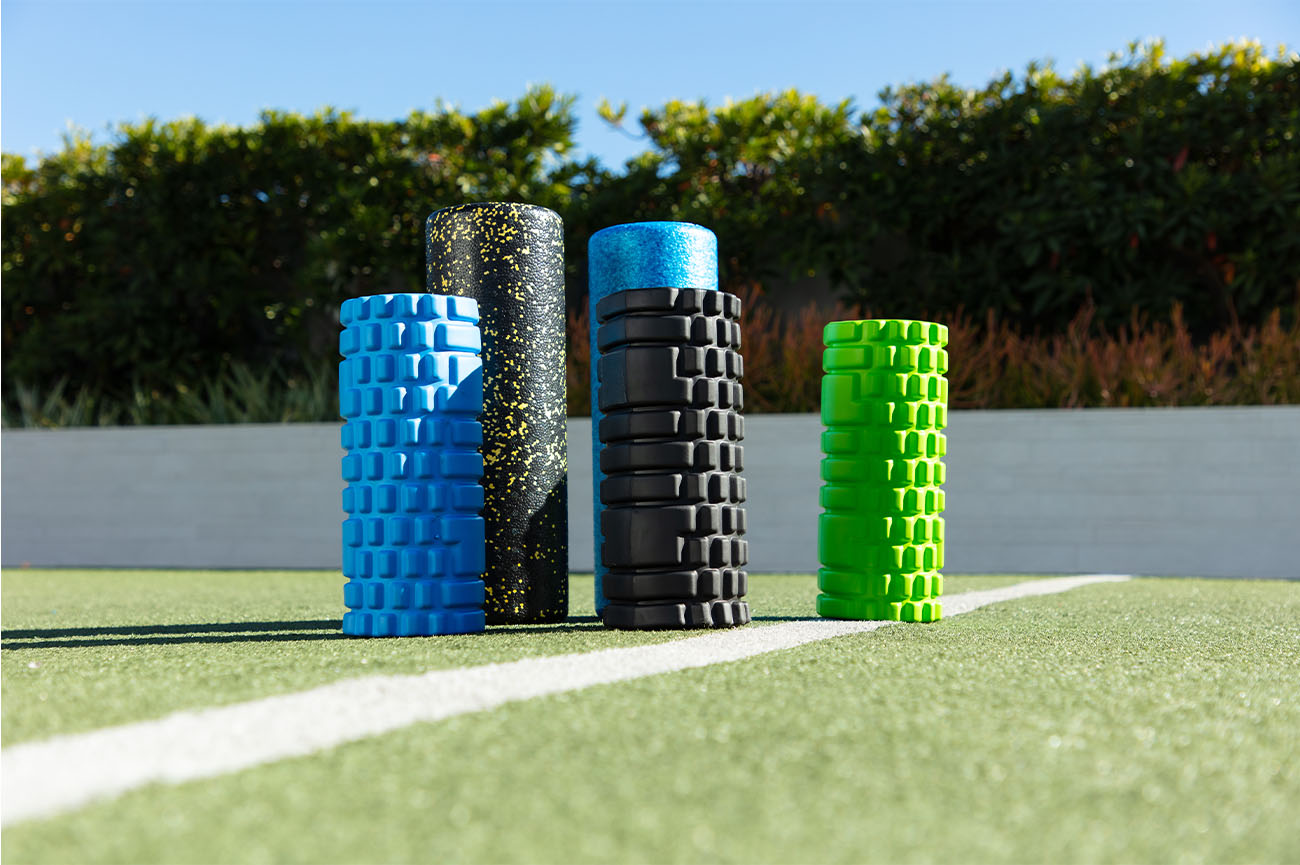
How to choose a good foam roller
If you are wondering what to look for in a foam roller, here’s everything you need to know on the best types of foam roller.
-
High-density smooth foam rollers
The most firm option. These are often made with high-density foam that won’t give as you roll, providing a deep massage to your fascia.
-
Medium-density smooth foam rollers
Medium-density rollers still offer a good level of pressure as you roll your muscles, but will be less intense than firmer options. You can adjust the pressure by putting more or less weight onto the roller.
-
Low-density smooth foam rollers
These are the lightest and most forgiving of the foam rollers, providing a more pleasant experience. If you’re new to foam rolling or looking for a less intense option, start here.
-
Grooved or bumpy foam rollers
Designed to dig into muscles and trigger points, which is more painful than the smooth options.
-
Short foam rollers
Useful to target a more specific area, or switch to a massage ball if you need to get into a hard-to-reach muscle, like the shoulder blade.
How to Use a Foam Roller For a Full Body Massage
Whether you went hard on back and biceps day, did 100 squat jumps, or went for a run, there’s a foam roll move to soothe your soreness. Follow along as personal trainer Angeline Calderone walks us through ten exercises to foam roll your upper and lower body.
1. UPPER BODY FOAM ROLL ROUTINE
See how to foam roll your upper body with these four muscle groups.
FOAM ROLLING YOUR ENTIRE BACK
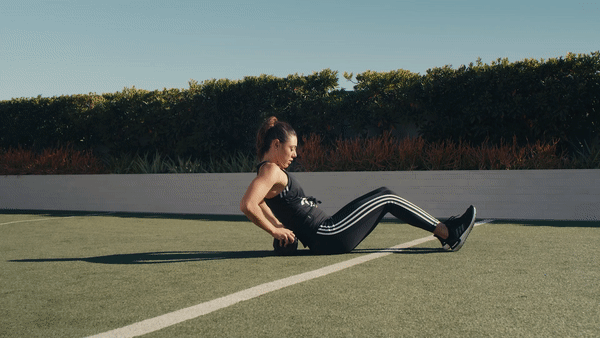
How to foam roll your upper back:
- Sit on the ground with your knees bent and the foam roller behind you.
- Lower your back onto the foam roller and adjust until your mid-back is laying on it, with your shoulders aligned with the ends of the roller with your arms crossed.
- Lift your glutes and keep your core engaged as you roll back and forth to feel a massage in your upper back, rolling down no further than where your rib cage ends. Roll from right to left on any areas that need more pressure.
RELAX SHOULDERS AND TRAPS
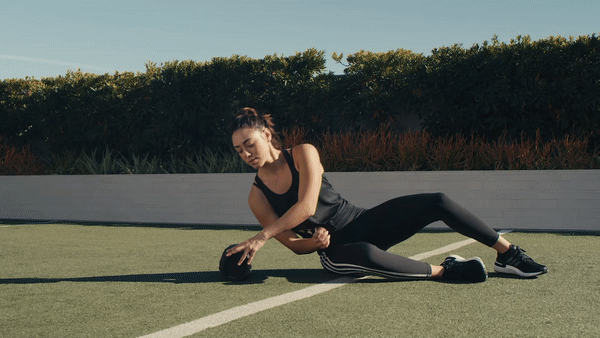
Can you use a foam roller on your shoulder? Yes, this is how to foam roll your shoulders:
- Lay on your side with the foam roller beneath your shoulder.
- Keeping your arm straight, gently shift your weight to massage your shoulder on the foam roller.
- Switch sides and complete with the other shoulder.
MAGIC MOVES FOR YOUR LATS
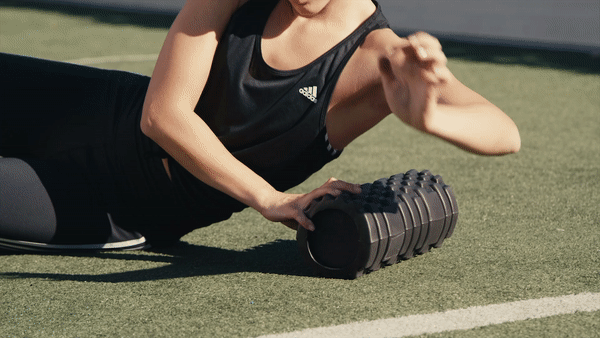
How to foam roll your lats:
- Lay on your side with your arm extended over the foam roller. You can bend your upper leg for support.
- Using your hands and legs, roll over the foam roller to feel a massage in your lat muscle. This movement doesn’t have to be big — you’re just trying to loosen the muscle fibers.
RELIEVE NECK PAIN
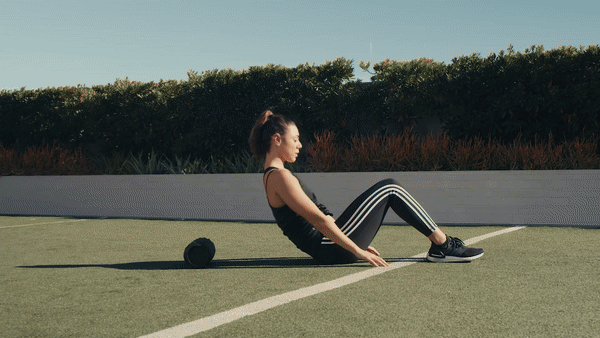
- Lay on your back with your knees bent, with the foam roller under your neck.
- Gently move your head from left to right to massage the soft tissue on each side, relieving any tension you may have.
2. LOWER BODY FOAM ROLLER MOVES
Follow along to learn how to foam roll your legs with each muscle group. Trainer tip: The legs can be painful to roll out, especially if they’re sore. Calderone suggests you “slowly and gently ease your way onto the foam roller. If it’s uncomfortable, shift your weight so that you’re applying less pressure, and then breathe through it.”
QUADS FLEXIBILITY
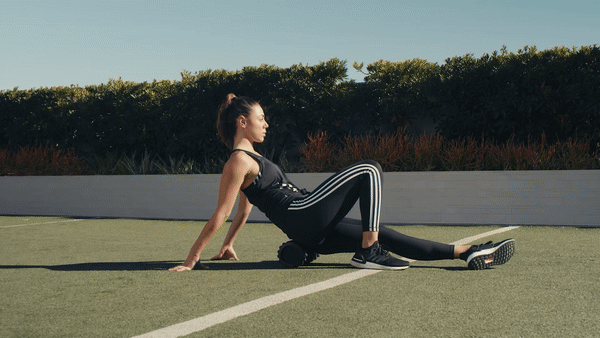
How to foam roll your quads:
- In a forearm plank position, situate the foam roller horizontally under your quads.
- With your core engaged and back flat, put your weight onto the foam roller, and push with your arms in a back and forth motion to feel a massage in your quads.
- You can slightly shift your weight to the right or left to feel the massage in your inner thighs and IT band.
LOOSEN YOUR IT BAND
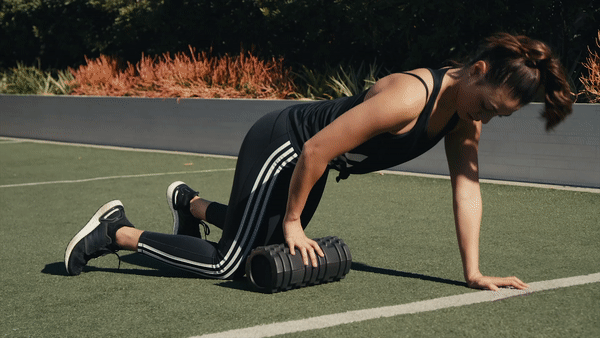
How to foam roll your IT band:
- In a side plank position, place the foam roller under your IT band (the outside of your leg), and cross your upper leg in front of you for support.
- Use your hand and supporting leg to roll from your hip to your knee, stopping on any points that need more pressure.
- If this is too painful, put more weight into your supporting leg and hand to take some pressure off your IT band as it rolls out.
STRETCH HIP FLEXORS
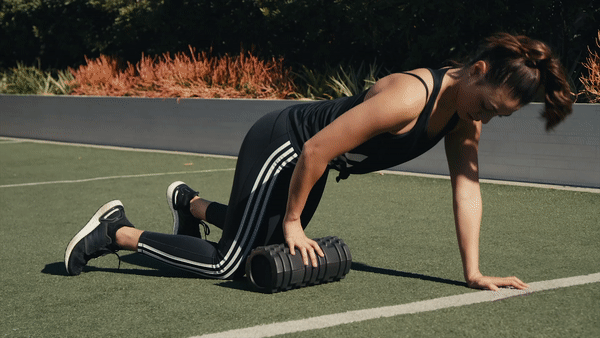
How to foam roll your hip flexors:
- In the same position as the quad movement, place the foam roller under your hip where your hip flexor is.
- Bend your opposite leg and use it to slightly push your body over the foam roller to feel a massage in your hip flexor. This is a very small range of motion.
- Switch sides and repeat.
CALVES
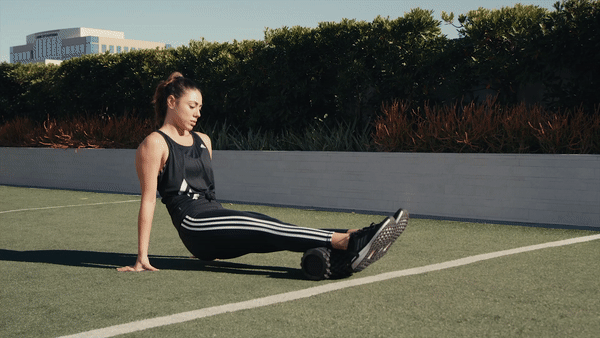
Here’s how to best foam roller your calves:
- Sit with your legs extended and your arms behind you, with the foam roller under your calves.
- Supporting yourself with your arms, put your weight into your calves and push to roll back and forth to feel a massage along the back of your calves.
- For more pressure or to focus on a tight area, cross one leg over the other for more weight as you roll one calf out.
HAMSTRINGS
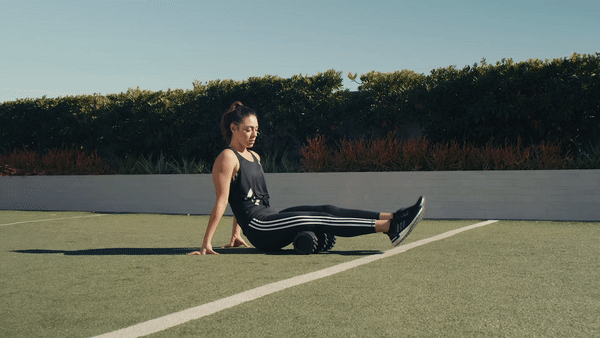
How to foam roll your hamstrings:
- Sit with one knee bent and the other leg straight out in front of you with the foam roller under your hamstring.
- Support yourself with your arms and push back and forth to feel a massage along the length of your hamstring. For additional pressure, cross your supporting leg over to add more weight to your hamstring as you roll.
- Switch legs and repeat.
Glutes

How to exercise your glutes with a foam roller:
- Sit with your glutes on the foam roller, knees bent.
- Cross your left leg over your right, and shift your weight onto your right glute.
- With your right arm extended behind you, roll back and forth and side to side to feel the massage in your right glute.
- Switch sides and repeat.
When should you use your foam roller?
If you’re wondering how often to foam roll, Calderone suggests a daily practice, even on rest days. Spend one to five minutes per muscle group, and beginners can use a stopwatch to ensure you’re getting the full benefits. “The more you do it, the better you’ll get a sense of how long to foam roll each muscle until you feel a release sensation,” said Calderone.
Although foam rolling is good for you, it’s important to do it correctly to avoid further pain or injury. Calderone lists some things to be aware of:
- The foam roller is meant for soft tissue, so don’t roll out on boney areas.
- Don’t spend too much time rolling out trigger points, because it can lead to more pain and tenderness.
- Don’t foam roll on injuries. Let them heal fully before foam rolling.
Try foam rolling after your next workout or as an active recovery exercise on your rest day. Either way, you’ll start feeling the amazing benefits of foam rolling before you know it.
